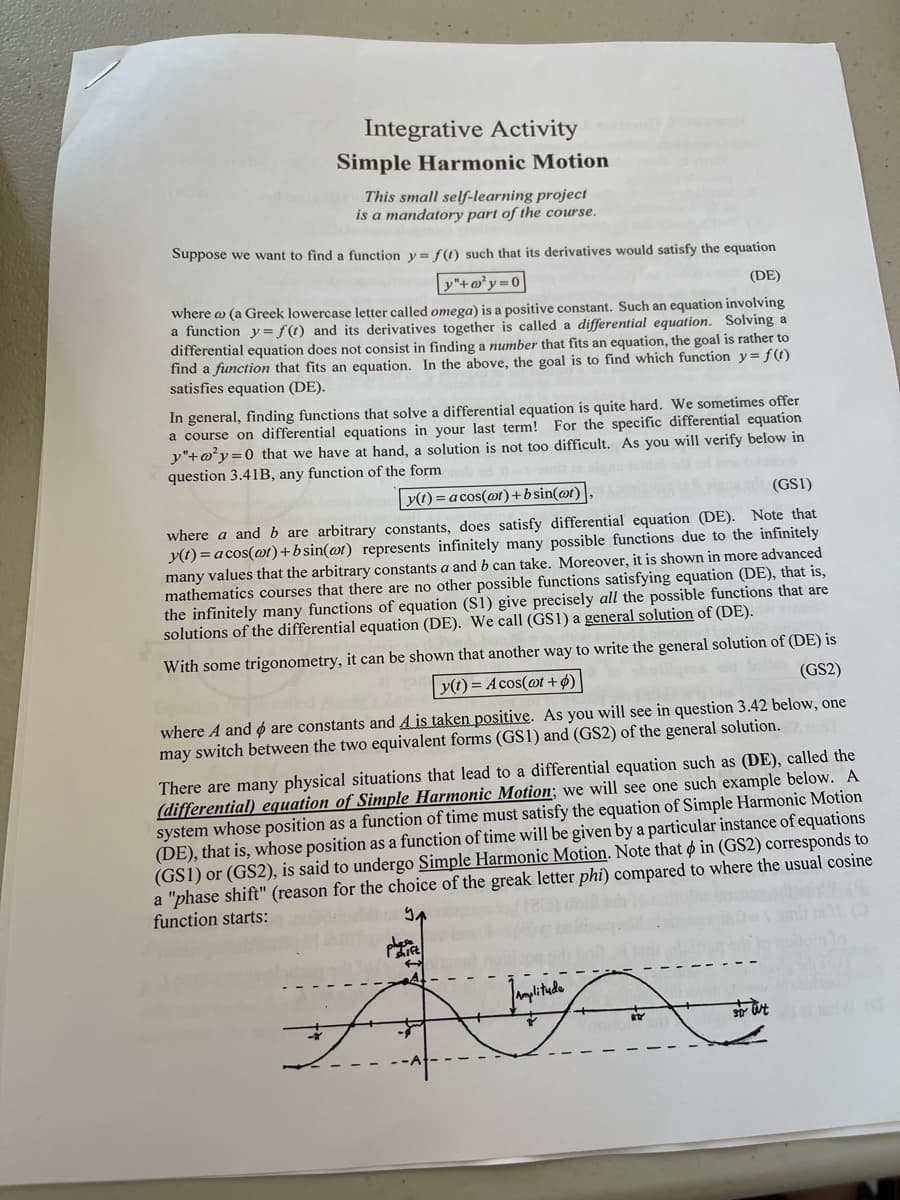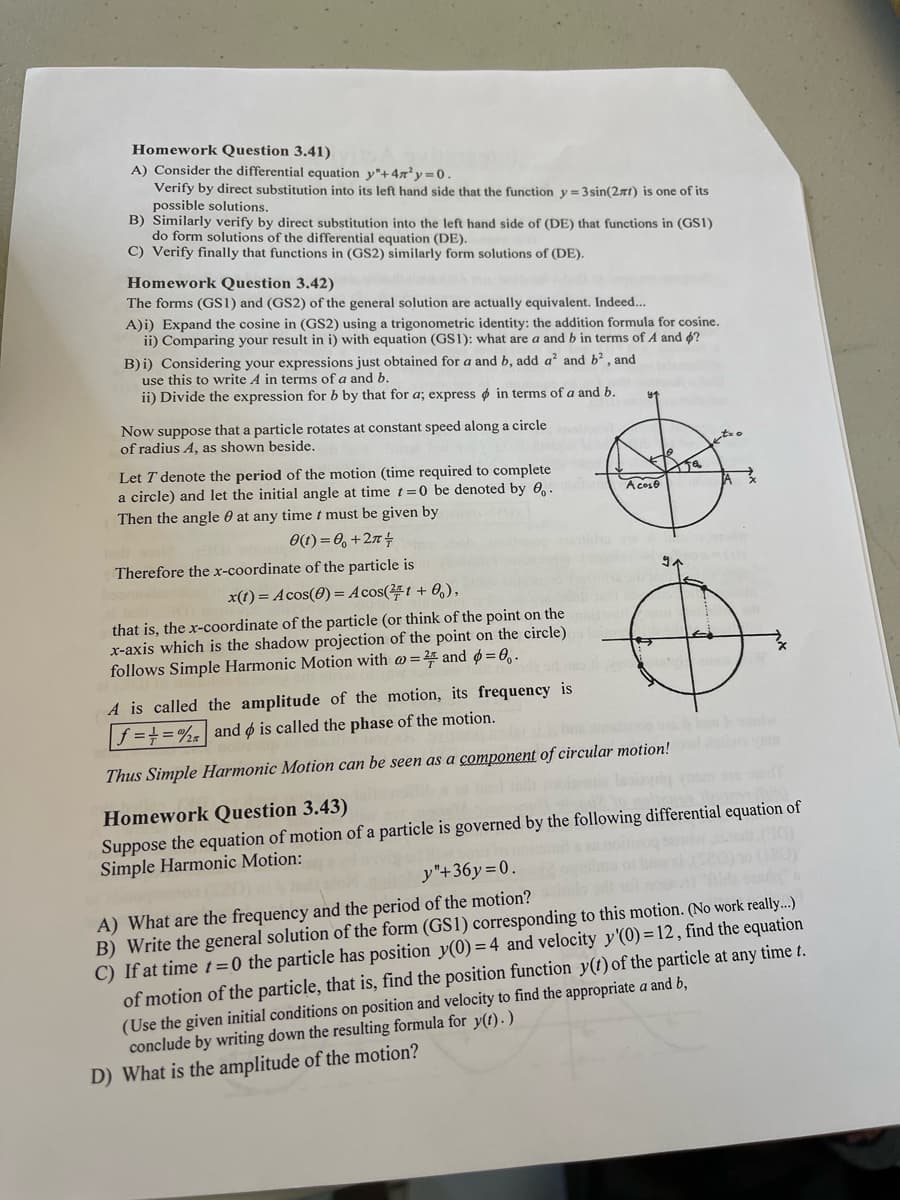Homework Question 3.43) Suppose the equation of motion of a particle is governed by the following differential equation Simple Harmonic Motion: y"+36y=0. A) What are the frequency and the period of the motion? B) Write the general solution of the form (GS1) corresponding to this motion. (No work really...) C) If at time t=0 the particle has position y(0) = 4 and velocity y'(0) = 12, find the equation of motion of the particle, that is, find the position function y(t) of the particle at any time t. (Use the given initial conditions on position and velocity to find the appropriate a and b, conclude by writing down the resulting formula for y(t).) D) What is the amplitude of the motion?
Simple harmonic motion
Simple harmonic motion is a type of periodic motion in which an object undergoes oscillatory motion. The restoring force exerted by the object exhibiting SHM is proportional to the displacement from the equilibrium position. The force is directed towards the mean position. We see many examples of SHM around us, common ones are the motion of a pendulum, spring and vibration of strings in musical instruments, and so on.
Simple Pendulum
A simple pendulum comprises a heavy mass (called bob) attached to one end of the weightless and flexible string.
Oscillation
In Physics, oscillation means a repetitive motion that happens in a variation with respect to time. There is usually a central value, where the object would be at rest. Additionally, there are two or more positions between which the repetitive motion takes place. In mathematics, oscillations can also be described as vibrations. The most common examples of oscillation that is seen in daily lives include the alternating current (AC) or the motion of a moving pendulum.


Step by step
Solved in 4 steps with 4 images









